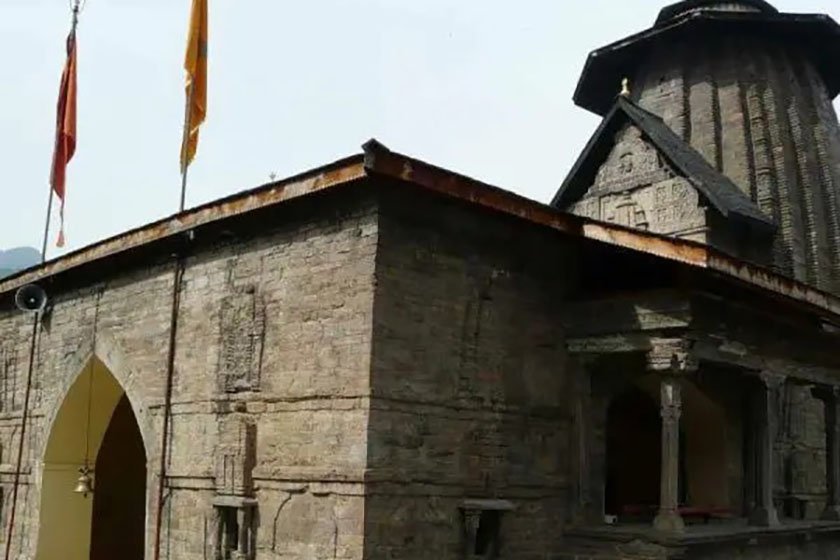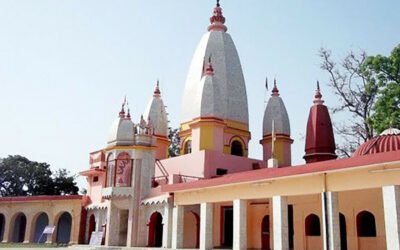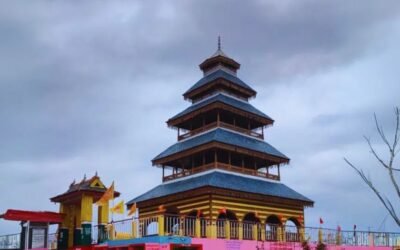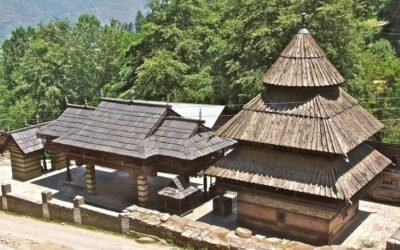Tucked behind the bustling lanes of Chowgan Mohalla, near the Treasury Building and Police Post, the Champavati Temple is one of Chamba’s oldest and most poignant shrines. Built in the 10th century by Raja Sahil Varman, this temple is a tribute to his daughter Champavati, whose mysterious disappearance gave rise to a legend of guilt, penance, and divine transformation.
🌄 Location & Accessibility
- Location: Near Treasury Building, Chowgan Mohalla, Chamba, Himachal Pradesh – 176310
- Altitude: ~996 meters above sea level
- Nearest Town: Centrally located in Chamba
- How to Reach:
- By Road: Easily accessible via NH-154 and NH-503 from Pathankot and Dalhousie
- By Rail: Nearest station – Pathankot (120 km)
- By Air: Gaggal Airport, Kangra (~180 km)
- The temple is a short walk from the Chamba Bus Stand and Bhuri Singh Museum
🛕 The Legend of Princess Champavati
According to local lore, Princess Champavati was deeply spiritual and often visited sadhus and temples. Her father, Raja Sahil Varman, grew suspicious and followed her one day, dagger hidden in his cloak. Upon reaching the ashram, he found it empty. A divine voice revealed that his daughter had been taken away as punishment for his mistrust.
Stricken with remorse, the king built this temple in her memory to atone for his actions and to protect his kingdom from further calamity.
🕉️ Deity & Worship
The Champavati Temple is dedicated to Goddess Mahishasuramardini, a fierce and protective form of Goddess Durga, known for slaying the buffalo demon Mahishasura. The sanctum houses a stone idol of the goddess, often adorned with red cloth, bangles, and floral garlands, symbolizing her divine feminine power and maternal grace.
Worship rituals include daily aartis, incense offerings, and recitation of Durga Saptashati, with devotees seeking protection, justice, and strength in adversity. The temple also features shrines to Vasuki Naga and Wazir, reflecting its layered spiritual heritage. During Navratri, the temple becomes a hub of devotion, with special pujas, community feasts, and folk performances honoring the goddess’s victory over evil. Pilgrims visit to seek blessings for fertility, family well-being, and spiritual cleansing, often tying sacred threads and offering coconuts as tokens of faith.
🏛️ Architectural Highlights
- Built in Shikhara style, influenced by Nepali temple architecture
- Features ornate stone carvings, a large wheel on the rooftop, and cylindrical spires
- The sanctum houses Goddess Mahishasuramardini, a fierce form of Durga
- Additional shrines to Vasuki Naga and Wazir Devta are present within the complex
- Managed by the Archaeological Survey of India, preserving its historical integrity
🎉 Festivals & Rituals
- Navratri (Chaitra & Ashwin): The temple comes alive with devotional music, aartis, and community feasts
- Daily Worship: Devotees offer red cloth, coconuts, and incense to the goddess
- Local Fairs: Held during seasonal transitions, drawing pilgrims from across Chamba
🏞️ Nearby Attractions
- Laxmi Narayan Temple: Chamba’s most iconic temple complex
- Shri Hari Rai Temple: Known for its three-faced Vishnu idol
- Chamunda Devi Temple: A wooden marvel on Shah Madar Hill
- Bhuri Singh Museum: A treasure trove of Pahari art and manuscripts
- Akhand Chandi Palace: A blend of Mughal and colonial architecture
🙏 Spiritual Experience
The Champavati Temple is more than a monument—it’s a memorial of love, loss, and redemption. As you step into its stone sanctum, you feel the weight of a father’s remorse and the grace of a goddess who turned sorrow into sanctity. It’s a place where history breathes through devotion, and every carving tells a story of faith.




